Results
-
 £144.99
£144.99Festa Paesana - Jacob de Haan
Lunteren, a village on the Veluwe (a wooded region in the Netherlands), sets the scene annually for a village festival dominated by folklore. Festa Paesana (Italian for village festival) is set to music by several folkloric sketches. The theme in Festa Paesana is partly based on a Dutch anthem (Wien Neerlands bloed); when other lyrics are used it is also known as the Lunteren anthem.The work begins with a festive introduction, completed by chimes and drums, in which pieces of the Lunteren anthem are heard. The music then transitions to represent a horse auction. We hear horses run their first rounds in the auction ring while being whipped. The following theme is partly basedon the anthem. The tension of the traditional auction is amplified by an ever-increasing cadence, reaching its climax when the word ?Sold!? is shouted. The night ends with a majestic variation on the Lunteren anthem.The next morning, when the tower clock hits seven times, the village is awaked by the reveille of the heralds. In a fugatic version of the anthem, we can hear the village slowly come to life. This evolves with the chiming of all towers in the village; the celebration can begin. Carriages drawn by horses rumble through the village and thus, it is easy to hear when a horse hesitates or runs amuck. A traditional folk dance group then dances a whirling waltz while the audience shares their pleasure. Musicians march along the scene and take over the waltz theme in their march. Until deep in the night, the musicians are still heard playing in the streets. Meanwhile, we hear the anthem theme being played in a choral variation (in minor). The first time it is played quietly, as a preparation for Sunday. Then it is played in a celebrating way, enabling the devout village residents to remember the past pleasant celebration with satisfaction.
Estimated dispatch 7-14 working days
-
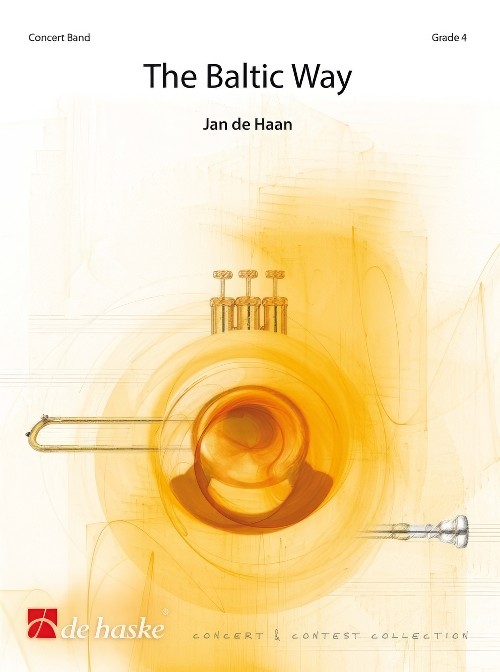 £137.99
£137.99The Baltic Way (Concert Band - Score and Parts) - De Haan, Jan
In 1989, the demonstration named the Baltic Way, also known as the Baltic Chain, was held in the Baltic states of Estonia, Latvia and Lithuania by its citizens in a call for independence from the Soviet Union. On 23rd August 1989, some two million participants formed a human chain, hand-in-hand all the way from the Estonian capital of Tallinn its Latvian counterpart, Riga, through to the Lithuanian capital of Vilnius - six hundred kilometres long. It became the longest human chain ever created and turned out to be the final push needed for much sought-after independence. This historic event became the source of inspiration for this composition. The introduction of the first movement, 'Struggle for Independence', is based on a nocturne for piano by the renowned Lithuanian composer and painter Mikalojus Konstantinas Ciurlionis (1875-1911), thematic material from which has been incorporated throughout the whole composition. The melancholic beginning is followed by a powerful theme which reflects the resolve of the Baltic people. The sudden aggressive, dissonant chords and a dominant and, in rhythmic terms, contrary bass drum announce that the resistance is not going smoothly. Just for a moment, we hear the anthem of the Soviet Union in the lower brass, but this is relentlessly pushed to the background by the rest of the band playing the Lithuanian national anthem, 'Tautiska giesm?' (Lithuania, our homeland). The second movement, 'Decades of Suffering', echoes life under the Soviet Union's thumb. In the pursuit of independence, a peaceful protest is planned in which a human chain is formed across the Baltic states of Estonia, Latvia and Lithuania. This 'Chain of Freedom' is depicted in the final movement of the work. Duration: 10.30
Estimated dispatch 7-14 working days
-
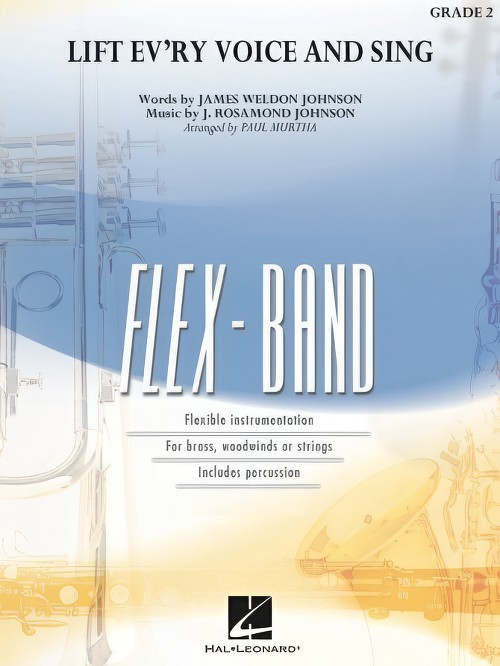 £53.50
£53.50Lift Ev'ry Voice and Sing (Flexible Ensemble - Score and Parts) - Johnson & Johnson - Murtha, Paul
James Weldon Johnson's 1900 poem was set to music by his brother in 1905, and has since become known as the "Black National Anthem." With a theme of thanksgiving and affirmation, this is a stirring anthem for our times.
Estimated dispatch 7-14 working days
-
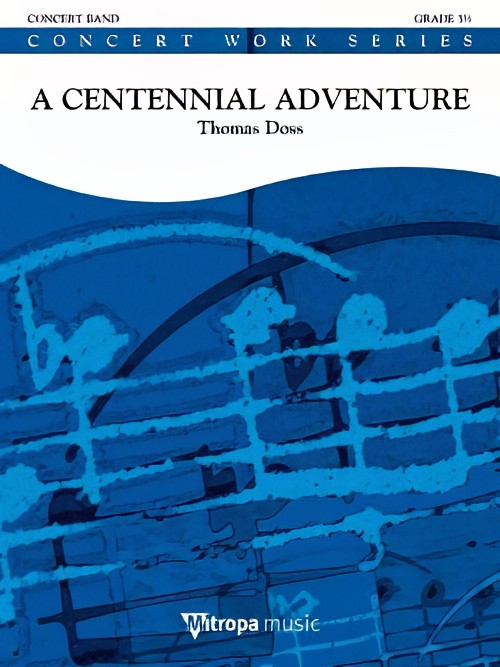 £118.99
£118.99A Centennial Adventure (Concert Band - Score and Parts) - Doss, Thomas
100 Years of the Republic of Austria should be an occasion to reflect on the value of freedom and democracy, precious treasures that don't grow on trees but which have to be fought for again and again. The imperial anthem composed by Franz Josef Haydn, which to this day, survives as the German national anthem, has played a very special role in the story of Austria. It seems that Haydn was inspired by a Croatian folksong. It was sung in Burgenland Croatian areas in various versions under the title Atal se jesem (I am standing). The composer wrote this piece as a tribute to all people standing up for democracy in the name of mankind. A festive and impressive piece for celebrational events alike! Duration: 6.45
Estimated dispatch 7-14 working days
-
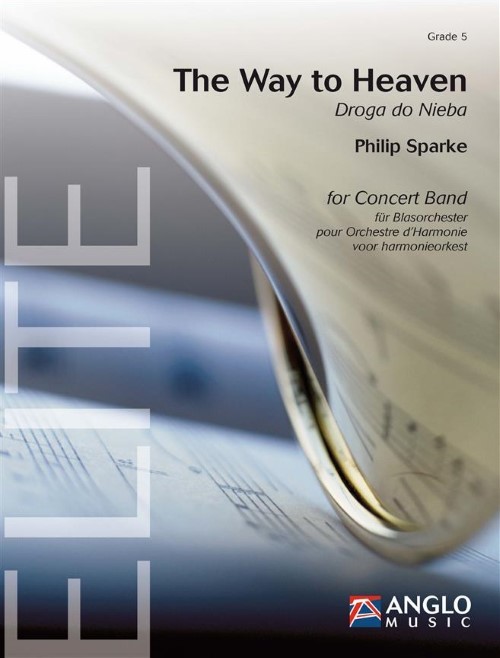 £106.99
£106.99The Way to Heaven (Concert Band - Score and Parts) - Sparke, Philip
The Way to Heaven (Droga do Nieba) was commissioned by the Royal Air Force Music Services. 2015 was the 75th anniversary of the Battle of Britain, which took place between July and October 1940, when the courageous fighter pilots of the Royal Air Force thwarted Hitler's ambitions to launch an invasion on the UK. The Way to Heaven opens with fluttering woodwind figures and brass fanfares, which build to a climax before a change of key introduces a short quotation for the Polish National Anthem - Mazurek Dbrowskiego. This fades and you can hear the signal to scramble and the throaty sounds of the squadron's Merlin engines bursting into life before they line up to take off. This leads to the main thematic material of the work, which depicts the heaven-bound flight of 303 Squadron as it climbs to intercept the incoming Messerschmitt 109s. A brief allusion to the Polish national anthem brings the piece to a triumphant close.Duration: 4.30
Estimated dispatch 7-14 working days
-
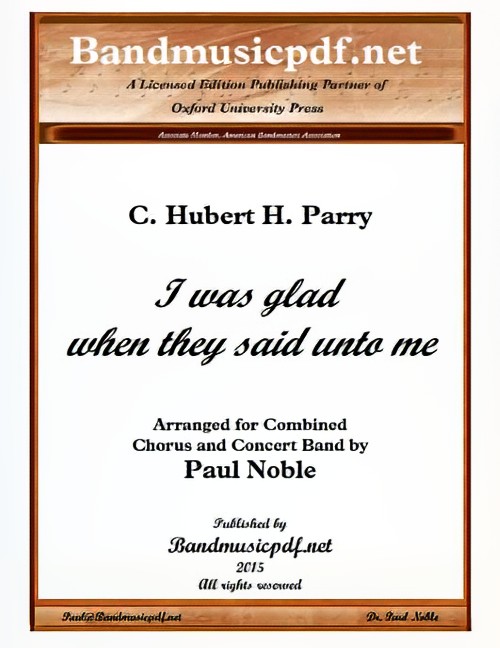 £110.00
£110.00I Was Glad When They Said Unto Me (Choir with Concert Band - Score and Parts) - Parry, Hubert C. - Noble, Paul
I Was Glad is an introit commonly used in the Anglican Church, and also used as an anthem traditionally sung at the coronation of the British monarch. Its most famous setting was written in 1902 by Sir Hubert Parry. Parry's version was composed for the coronation of King Edward VII in 1902, and revised in 1911 for that of King George V, when the familiar introduction was added. This setting employs antiphonal choir effects and brass fanfares. Apart from the imperial splendour of the music, the chief innovation is the incorporation in the central section of the acclamations Vivat Rex... or Vivat Regina... (Long live King/Queen...) with which the King's or Queen's Scholars of Westminster School have traditionally greeted the entrance of the monarch since the coronation of King James II in 1685. This section is generally omitted when the anthem is performed on other occasions. At the last coronation, that of Elizabeth II in 1953, the acclamation took the form of Vivat Regina Elizabetha. Parry's setting of I Was Glad was performed on 29 April 2011 at the Westminster Abbey wedding of Prince William, Duke of Cambridge and Catherine, Duchess of Cambridge (formerly Kate Middleton) as the processional music for the bride and her father and the bridal attendants. It had previously been performed at the wedding of the Duke's parents, Charles, Prince of Wales and Diana, Princess of Wales in 1981.
Estimated dispatch 7-14 working days
-
 £76.99
£76.99Intrada & Wilhelmus Wind Band Set (Score & Parts)
John Blanken composed Intrada & Wilhelmus in 2002.The title speaks for itself. It's an introduction to the national anthem of The Netherlands; Wilhelmus. In this piece the national anthem is heared two times followed by a short postlude. 0:02:45
Estimated dispatch 7-14 working days
-
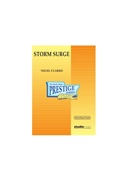 £199.95
£199.95STORM SURGE An Elemental Portrait for Concert Band (Prestige Concert Band - Score and Parts) - Clarke, Nigel
Storm Surge is a musical representation of the devastating North Sea storm surge (in Dutch, Watersnoodramp) of 1953. The surge left 2551 dead, 1836 people from the Netherlands alone, together with fatalities in Scotland, England and West Flanders. Storm Surge starts off with calm waters, while we hear the steadily growing sounds of the wind and sea. A specially commissioned poem, written by Martin Westlake, spoken over these sounds, warns of the dangers of ignoring the storm. Slowly, the storm starts to take hold and the sea begins to swell. The violence of the storm then erupts, but before it reaches its climax, the Dutch National Anthem gives a sense of the calm in the eye of the storm. It then returns to the storm surge and depicts the sea breaking through and ravaging the coastline. Eventually the storm surge recedes until a lone trumpet is left quoting broken fragments of the Anthem. The work closes with a calm breeze mournfully revealing the devastation left behind by this natural disaster.
Estimated dispatch 7-14 working days
-
 £37.95
£37.95STORM SURGE An Elemental Portrait for Concert Band (Prestige Concert Band Score inc. Sound Design CD) - Clarke, Nigel
Storm Surge is a musical representation of the devastating North Sea storm surge (in Dutch, Watersnoodramp) of 1953. The surge left 2551 dead, 1836 people from the Netherlands alone, together with fatalities in Scotland, England and West Flanders. Storm Surge starts off with calm waters, while we hear the steadily growing sounds of the wind and sea. A specially commissioned poem, written by Martin Westlake, spoken over these sounds, warns of the dangers of ignoring the storm. Slowly, the storm starts to take hold and the sea begins to swell. The violence of the storm then erupts, but before it reaches its climax, the Dutch National Anthem gives a sense of the calm in the eye of the storm. It then returns to the storm surge and depicts the sea breaking through and ravaging the coastline. Eventually the storm surge recedes until a lone trumpet is left quoting broken fragments of the Anthem. The work closes with a calm breeze mournfully revealing the devastation left behind by this natural disaster.
Estimated dispatch 7-14 working days
-
 £76.99
£76.99Zeit, dass sich was dreht Wind Band Set (Score & Parts)
This magnificent song was the official anthem for the 2006 World Cupwhich took place in Germany. It is full of African influence which links itto the next tournament which takes place in South Africa in 2010. A trulyoriginal football anthem that will bring the house down at any concert. 0:04:10
Estimated dispatch 7-14 working days
